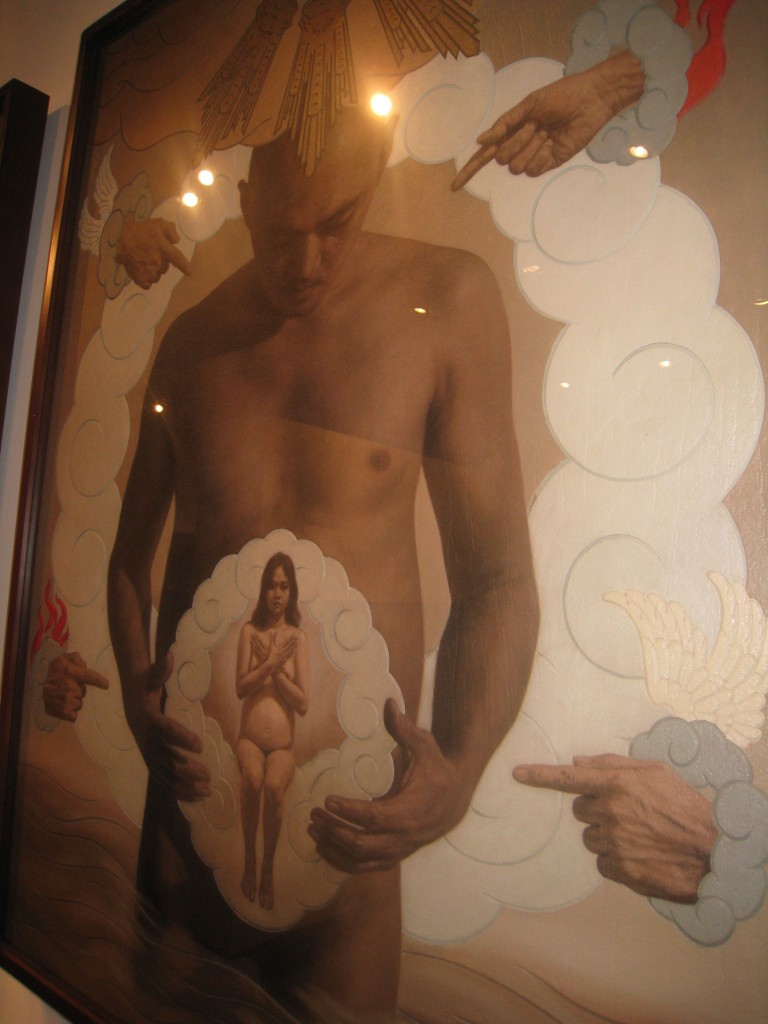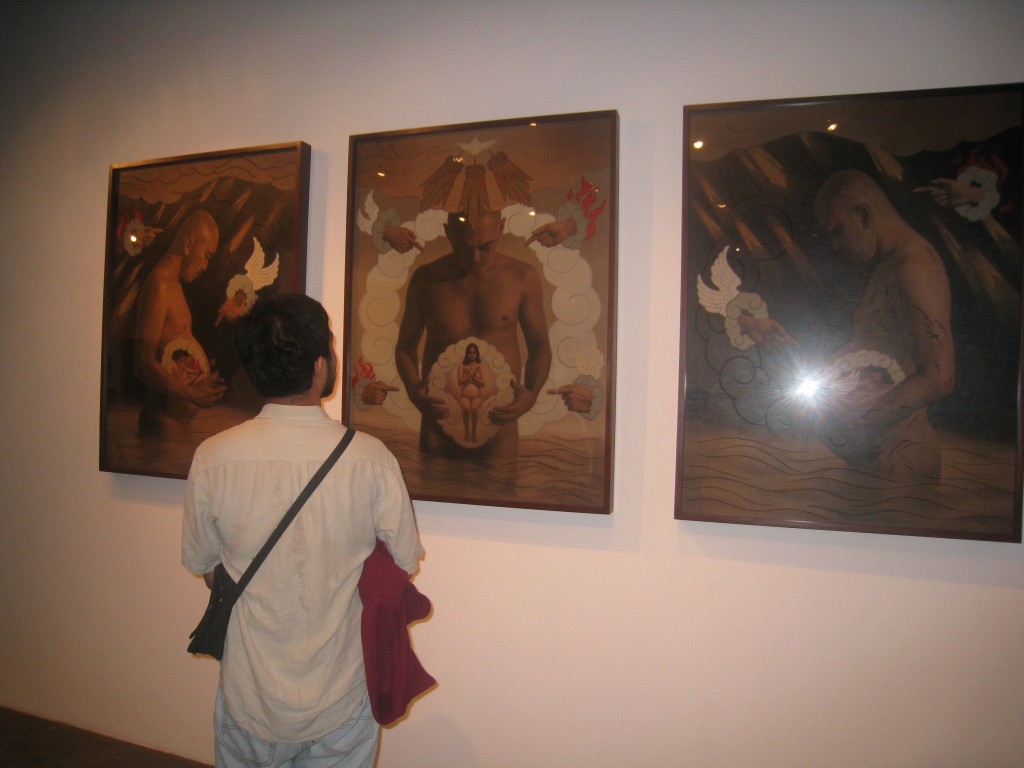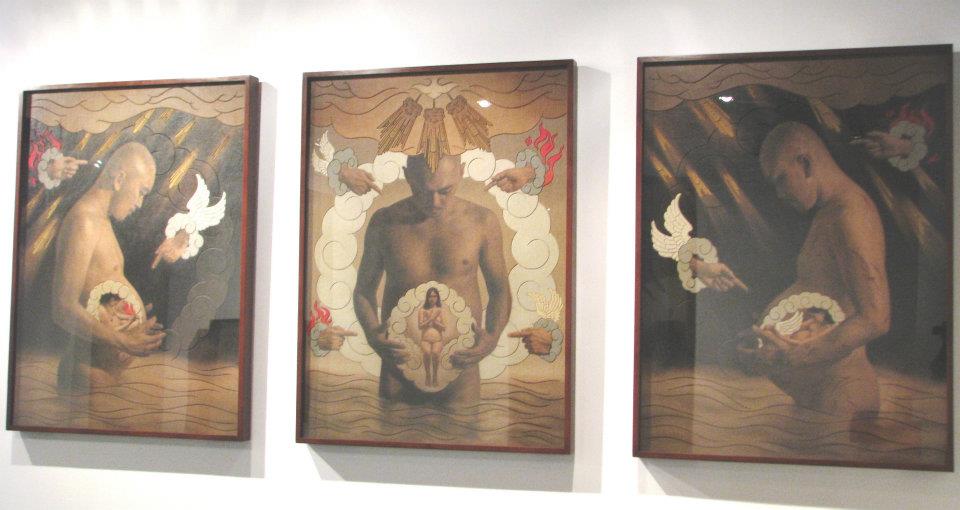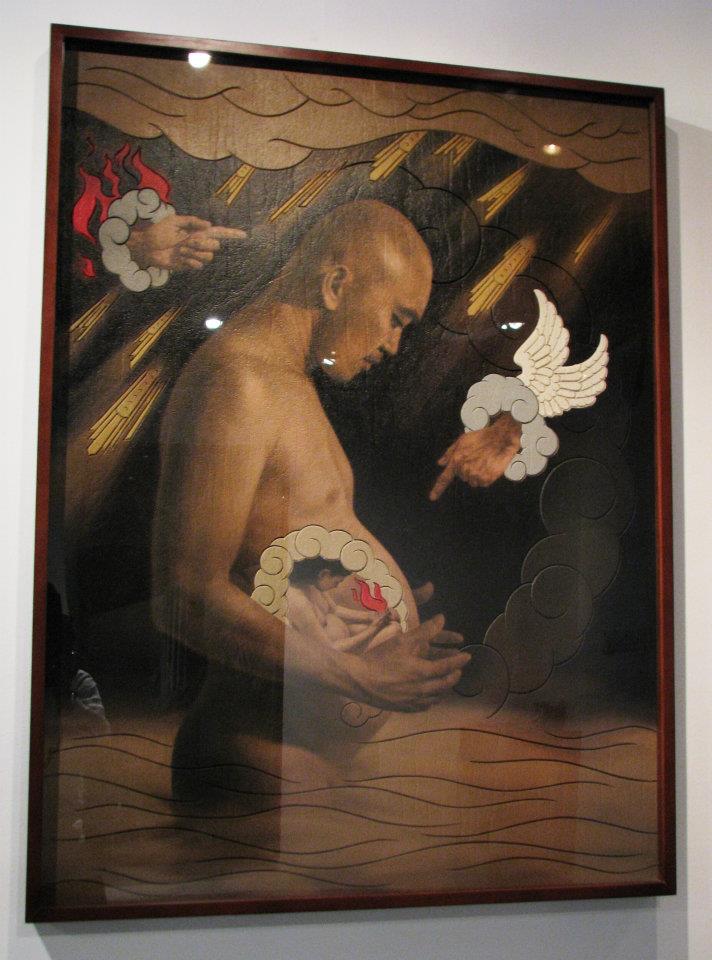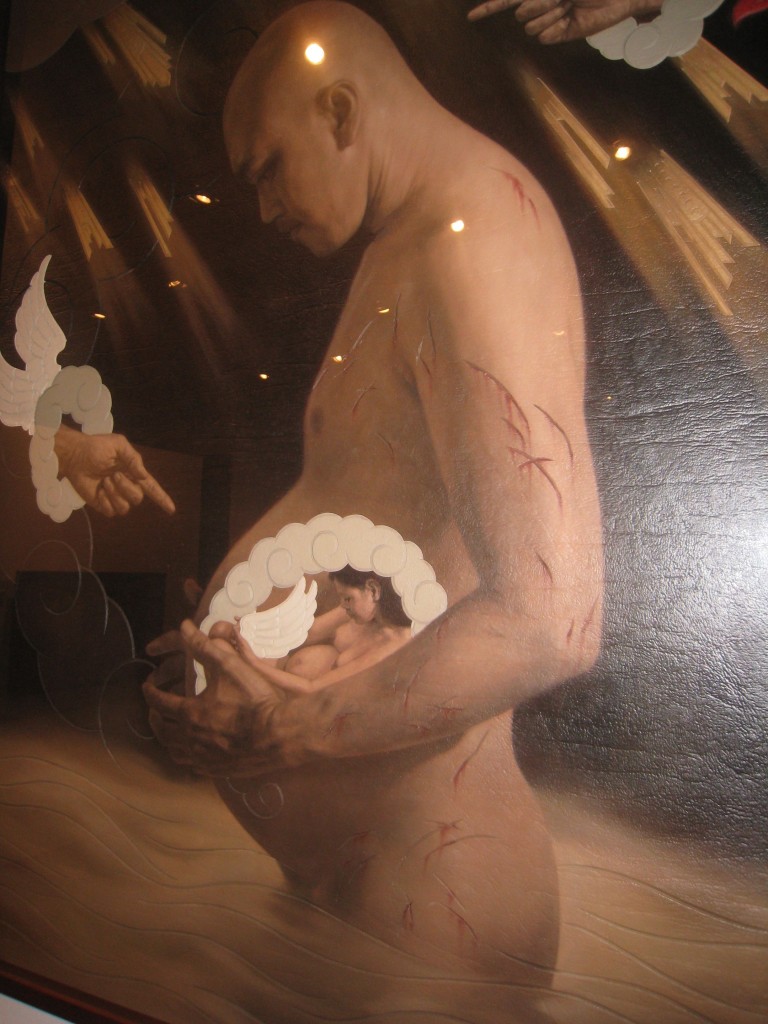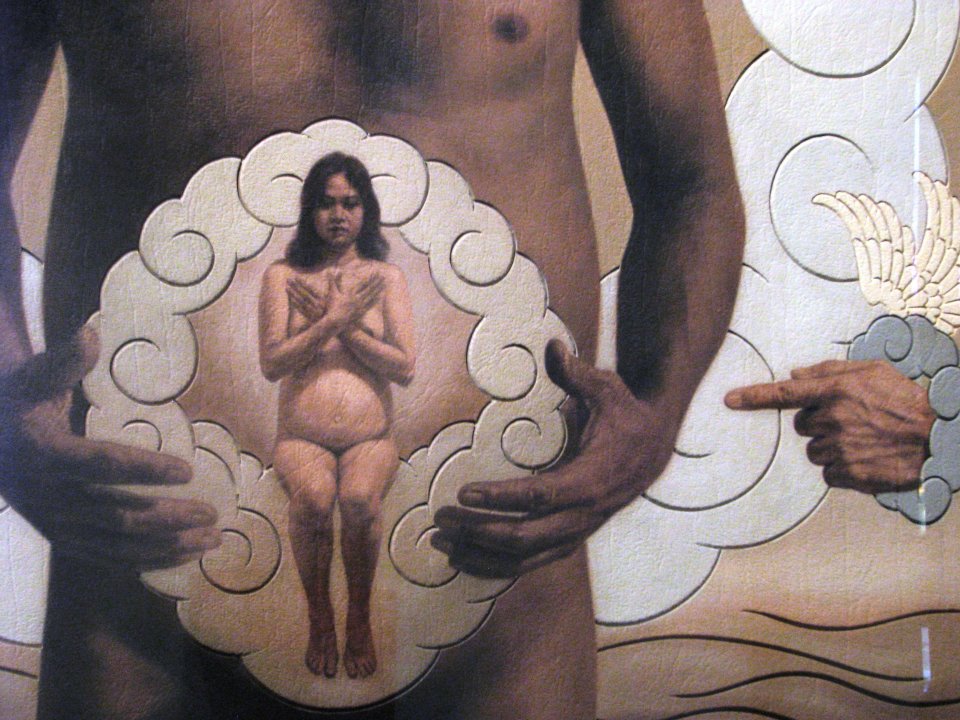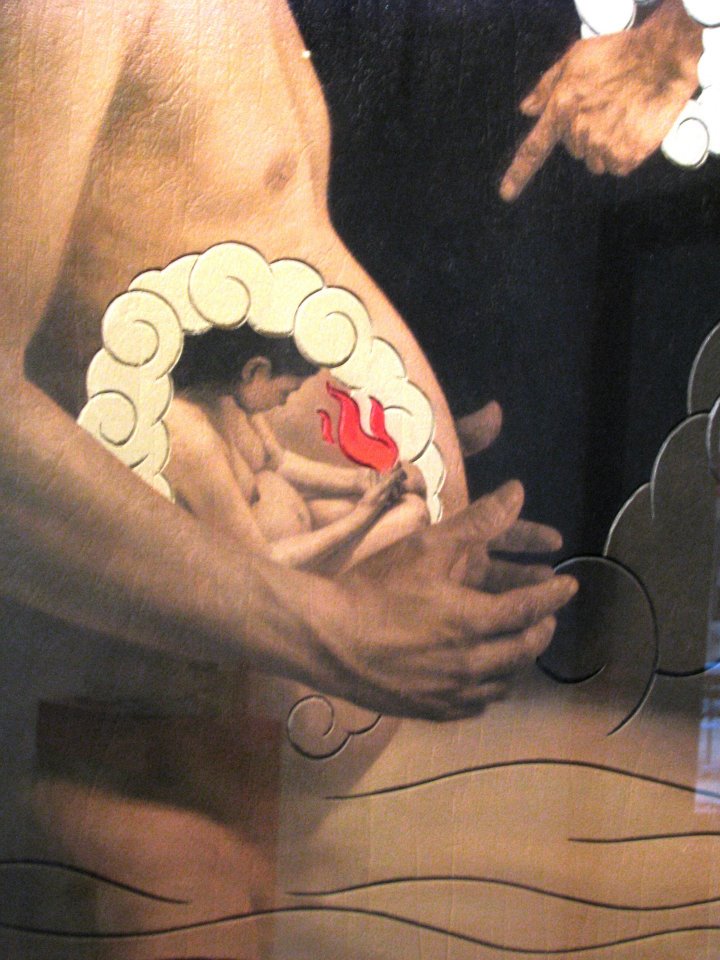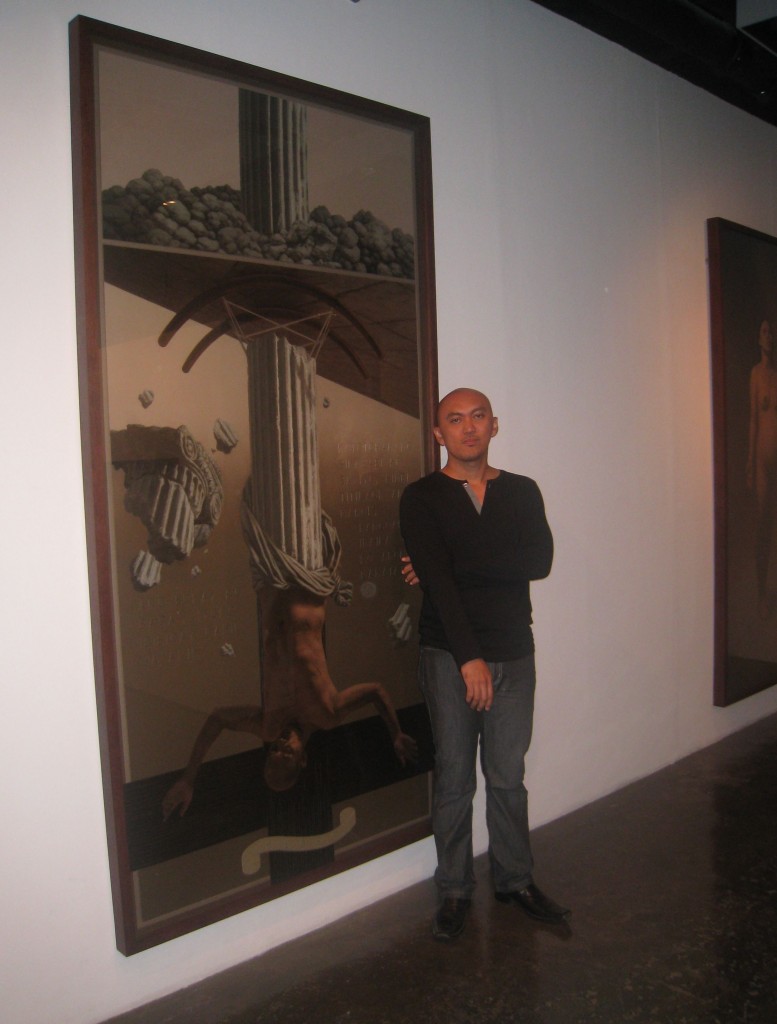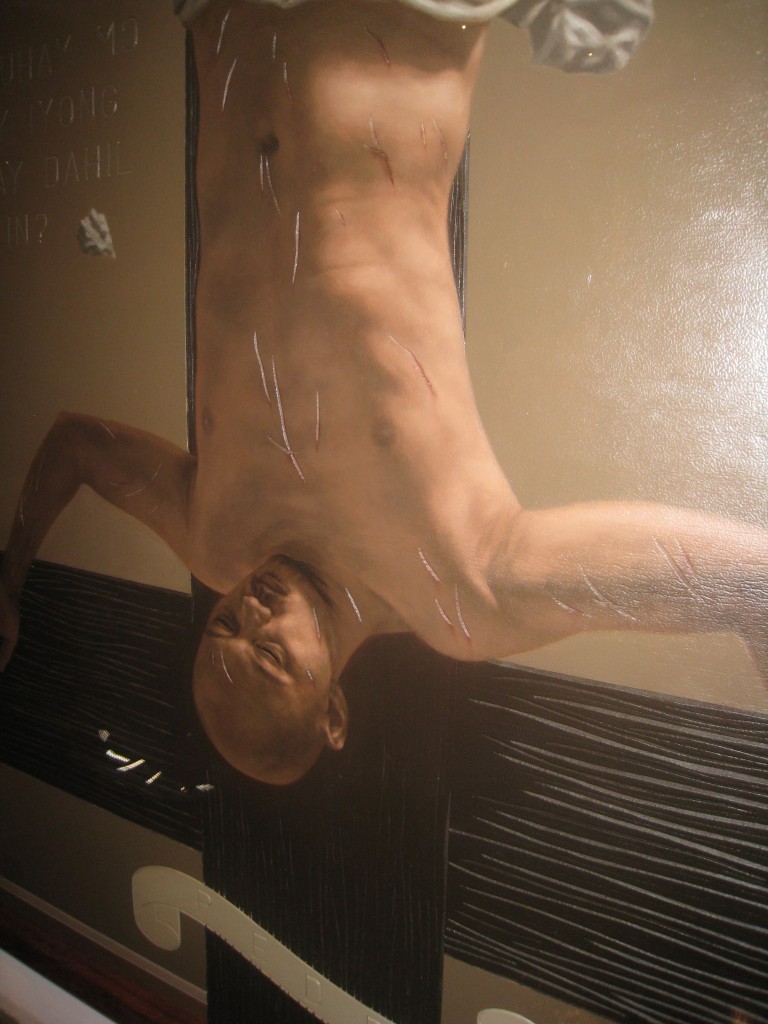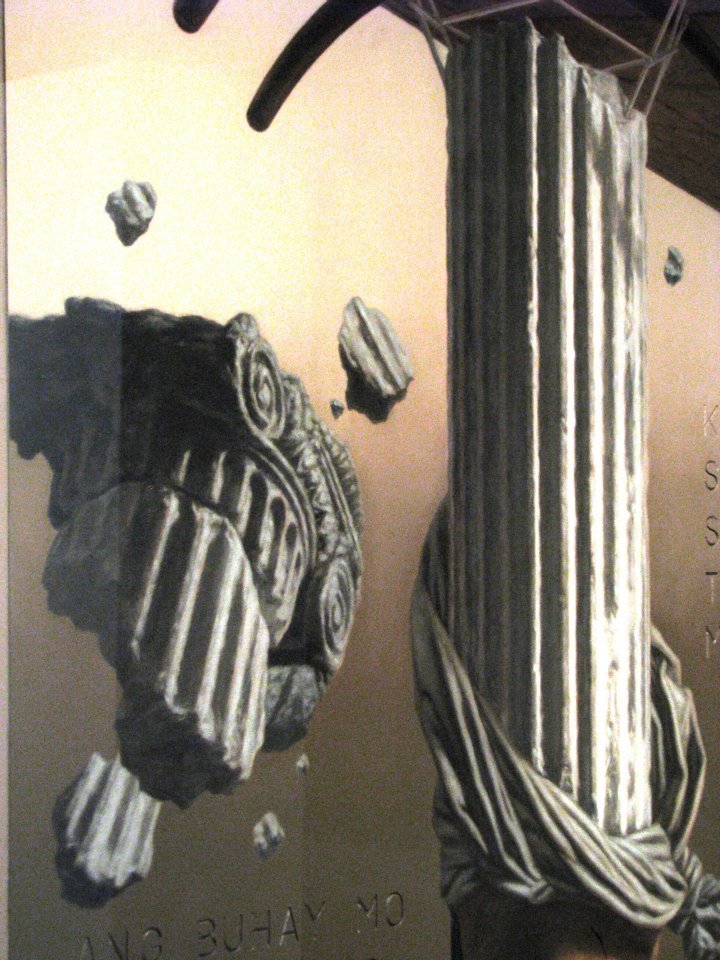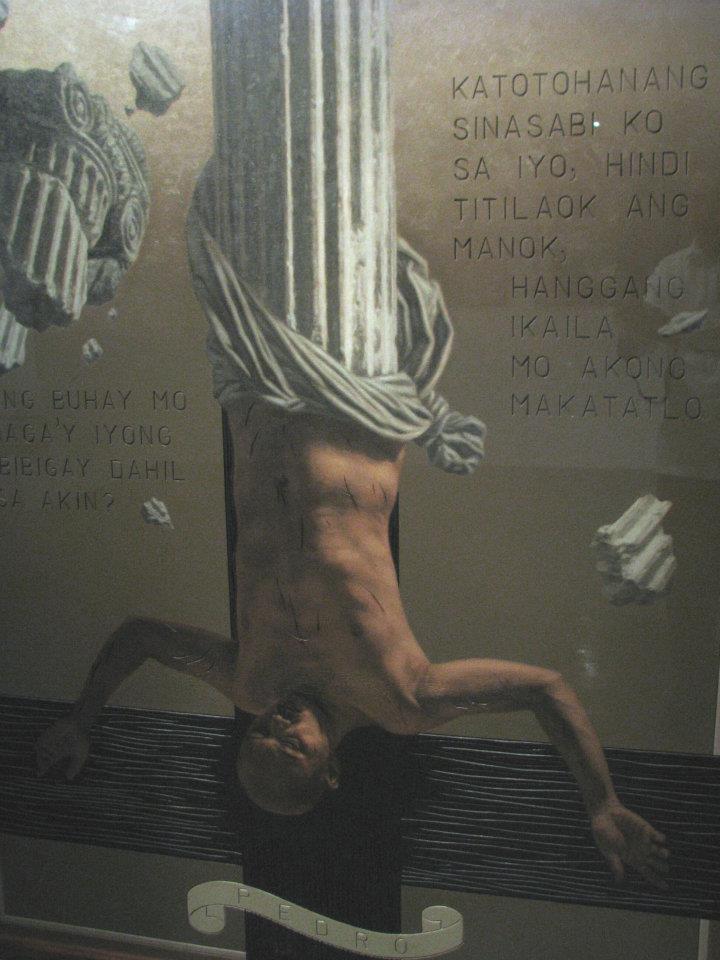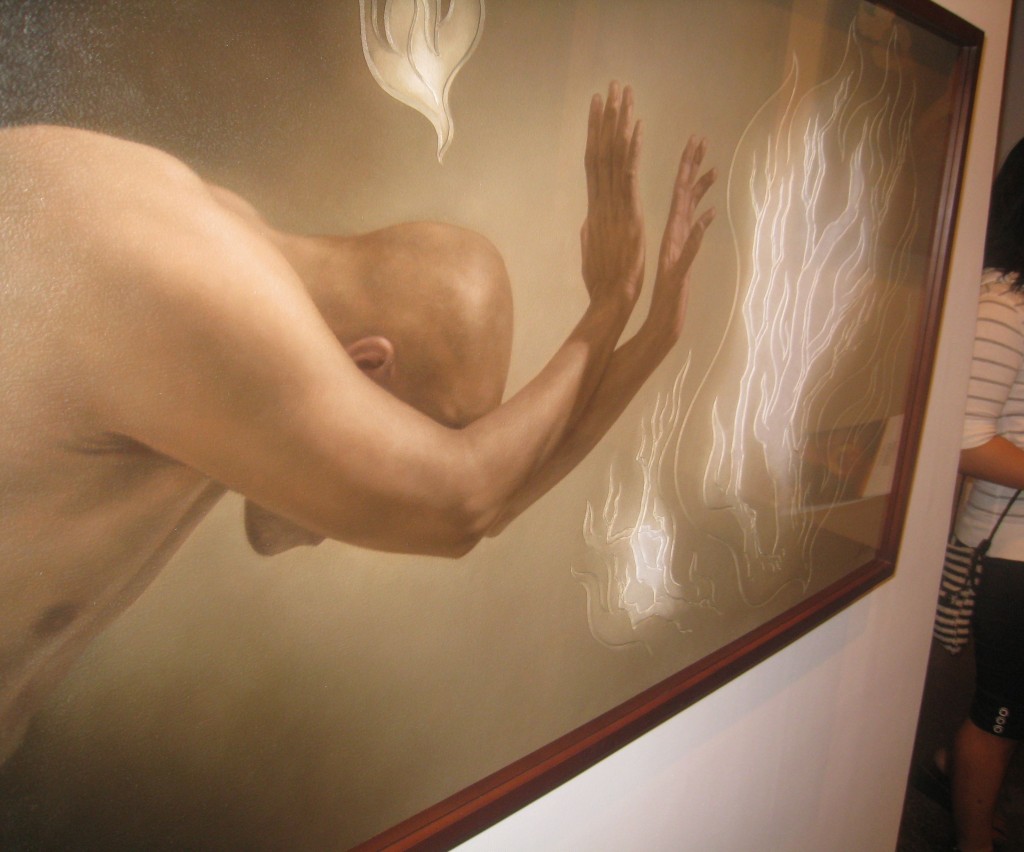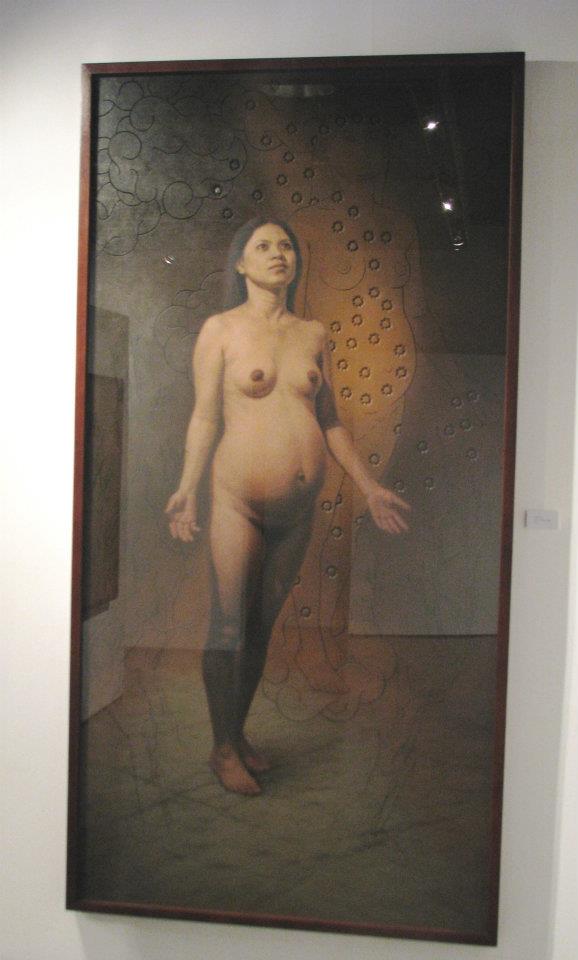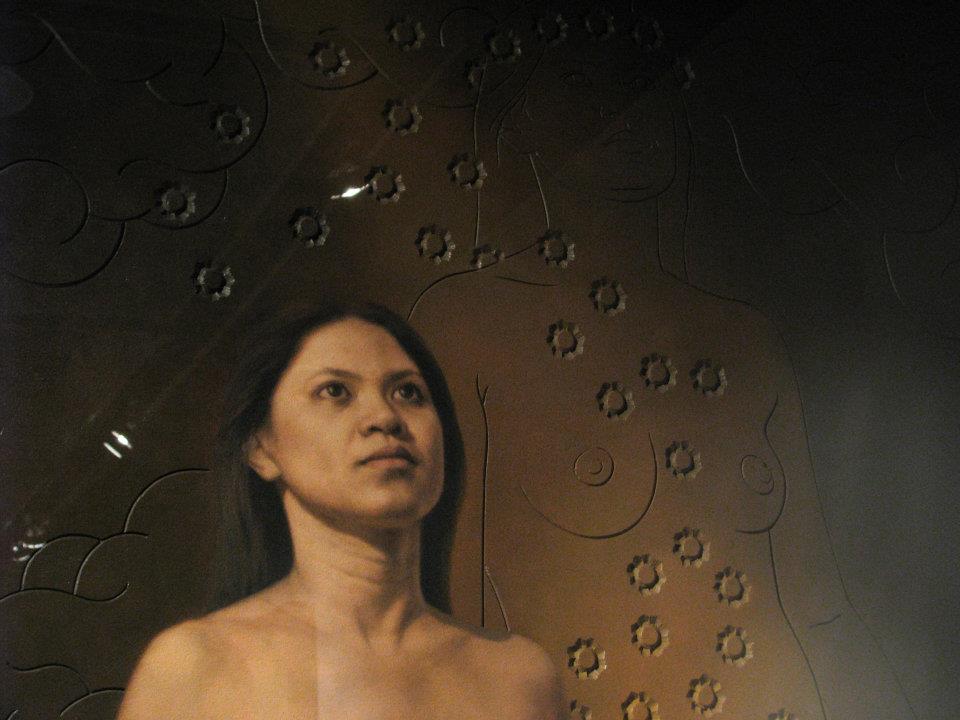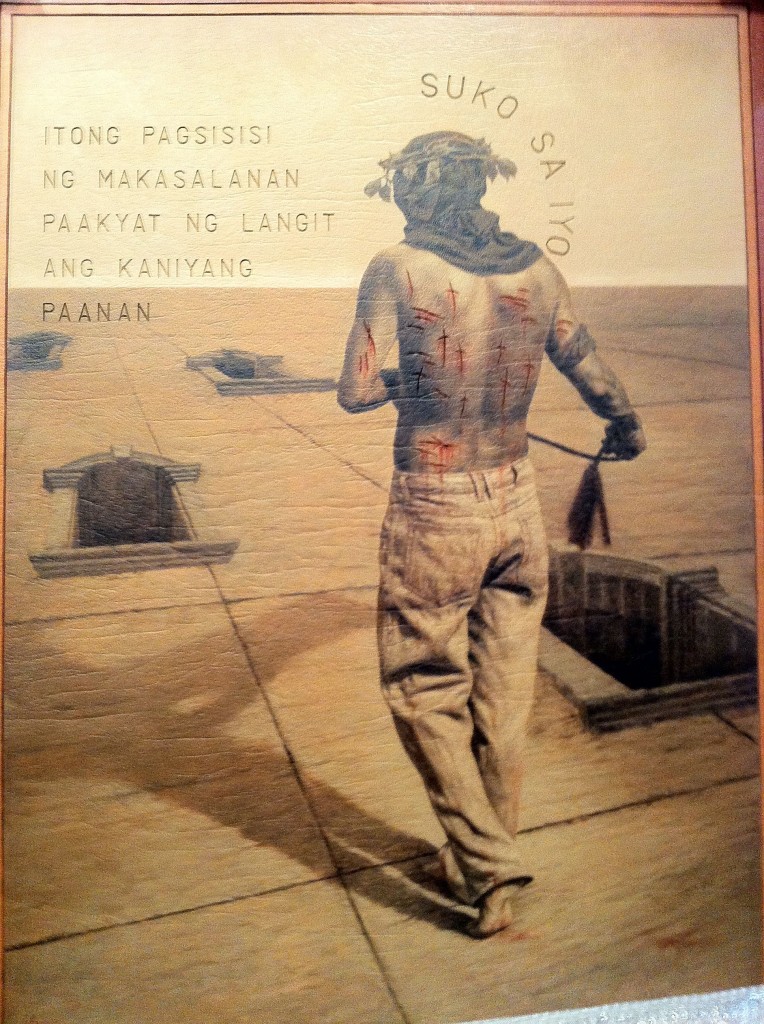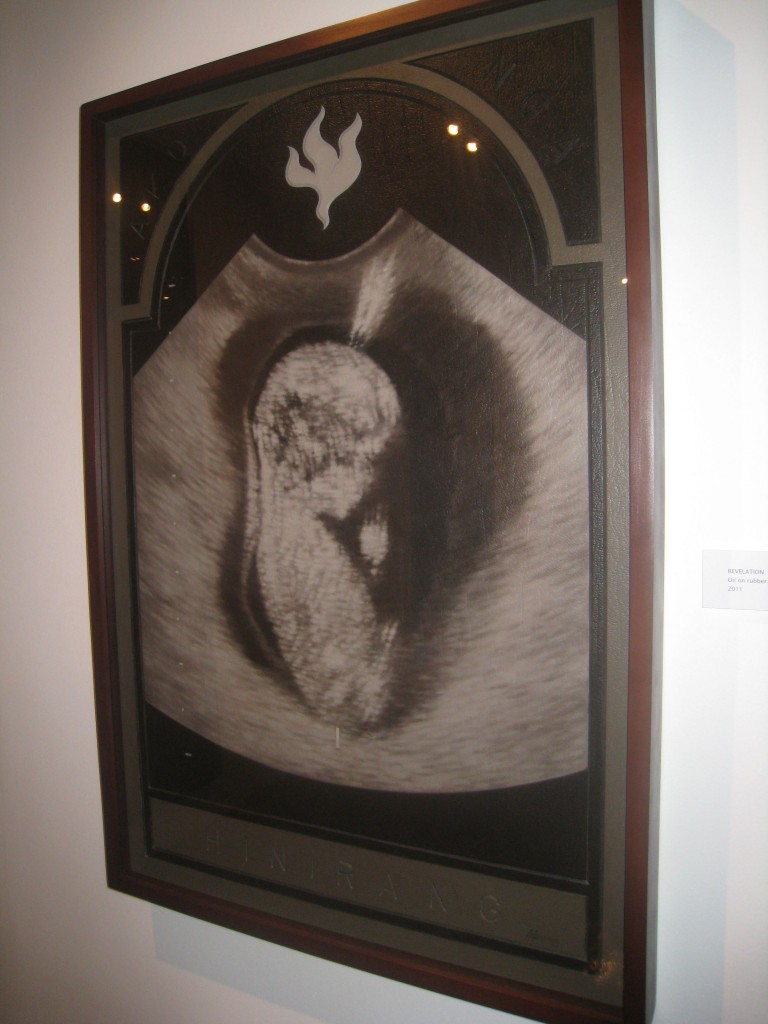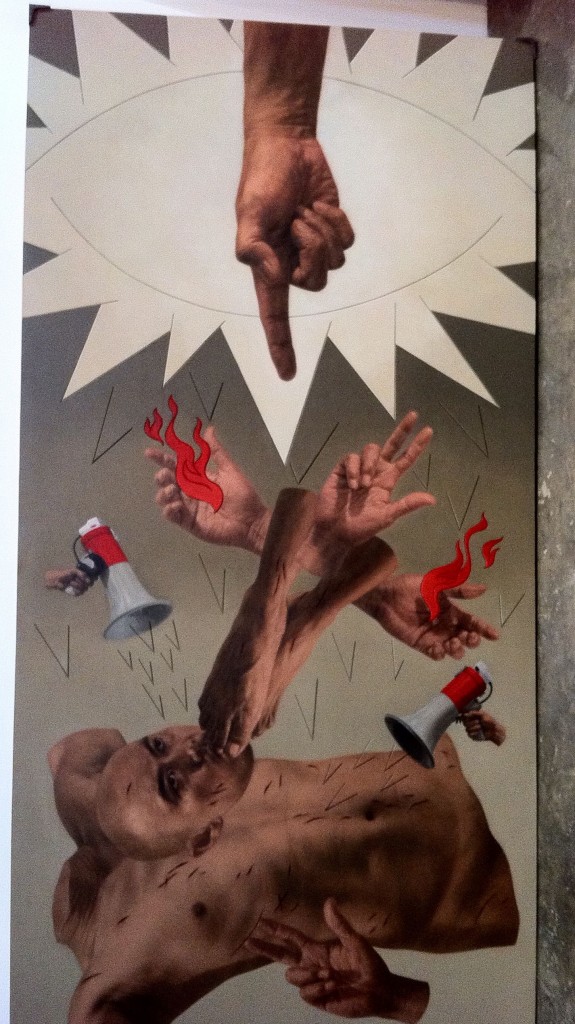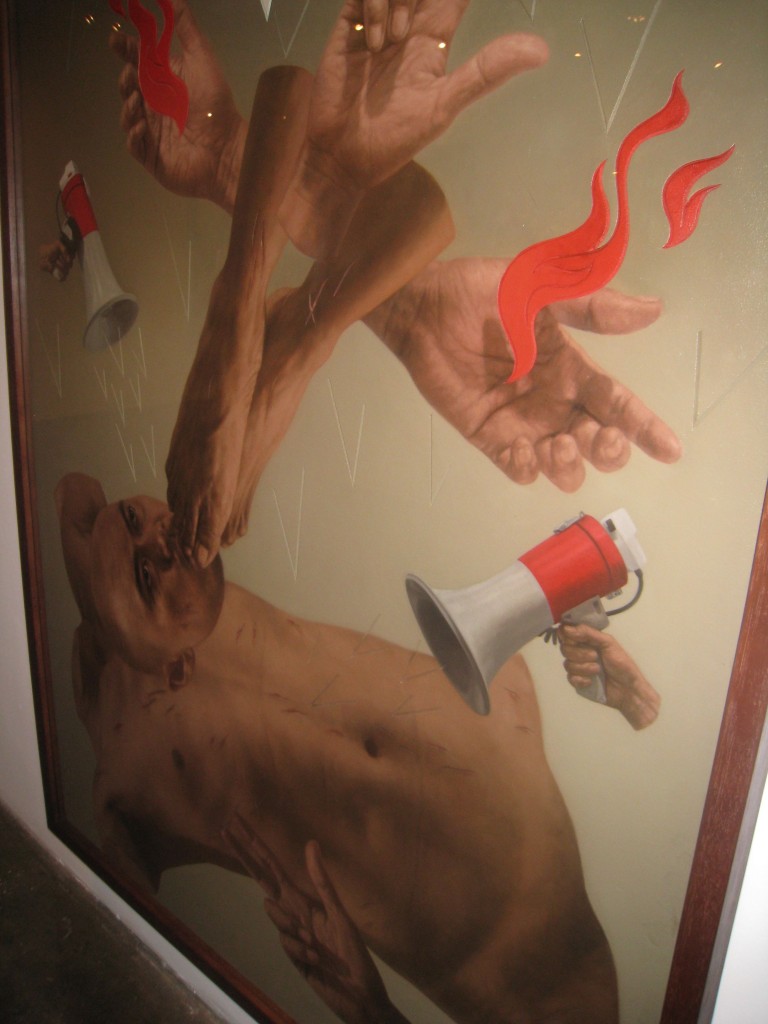The Filipino-English dictionary translates kalooban into three words: heart, mind, will. Alfredo Esquillo Jr. considers it the most spiritual word in the Tagalog language. “We can use it in our daily living or we use it in our relationship with God. That we have this one word must mean it is innate in us.”
Kalooban Narratives, Eski’s exhibit at Tin-Aw Art Gallery, taps into a spirituality triggered by the pregnancy of his wife with their second child, an event made more profound by the simultaneous occurrence of his father’s illness.
The gallery’s space does not permit a show of too many pieces. Eski has limited this one to seven paintings. I think, however, that this exhibit may count as one of his more seminal ones. He goes back to a familiar medium, oil painting on rubber panels. Four of the paintings measure eight feet long. As gallerist Valentine Willie of Manila Contemporary observed on opening night, Eski uses rubber as more than just ground, fully manipulating its potential and qualities in ways not possible with canvas. The rubber’s surface adds texture to the skin of his figures. He is able to slash and carve it to add depth to his details.
Eski’s technical skills though, have never been in doubt. More than his excellence in this aspect, he also posseses honesty, an uncompromising authenticity that gives his pieces their power. He burst into the art scene in the mid 1990s, taken under the wing of artist Renato Habulan, and thus, strongly influenced by the social realists. His observations on Philippine politics and history, his nationalism, remain as central to his work today. He has continued to pursue these themes in his paintings even if they may come off as dated. His art has always tackled serious issues with corresponding gravitas.
This particular set reflects on Eski’s faith, another theme he has explored before, but not as intensely personal as he does here. His own image figures prominently in almost all the works. As you enter the gallery, the triptych Fruit Of Thy Womb hangs on the right wall, taking most of its space. It isn’t an easy piece to look at as each panel depicts Eski pregnant. I think, though, that this work may turn out as the one we will remember this exhibit for.
All the panels show him cradling his womb. Inside, he has painted his wife’s likeness, and she is also expecting. “This talks about creation and inspiration. I see the universe as akin to a womb where everything is created. Inside it are other wombs, wombs within wombs. The pregnant male (in the center panel) is surrounded by a pattern of clouds that also forms a womb.” Above the clouds, the rays of light, the potensya that crown Quiapo’s Nazareno, symbolize the power of the Almighty.
In Liwanag, one of the three smaller pieces in the exhibit, Eski depicts himself overcome by a burning bush as Moses was. He is also St. Peter in Minsan, Ako Ay Pedro, crucified upside down in a painting that stands a majestic eight feet tall. Here Eski deliberates on the weakness of his faith, something he shares with Peter, who as Jesus predicted, denied him three times as the rooster crowed. Yet, he was made the founder of the church, its bedrock, despite his faults. The lower half of Peter’s body is a column signifying the church’s foundation that has, on occasion, been damaged.
Dwarfed by the other life-sized works, Penitensya shows a flagellant forging a path on the walls of a church on its side. We appreciate Eski’s skill here, the clean finish of the piece, the detail on the gashes that mark the penitent’s back.
Hardin is a tribute, tremendously heartfelt, to his pregnant wife. She glows, beautifully fecund. Beside her portrait hangs Eski’s replica of their daughter’s ultrasound scan, a painting he calls Hinirang.
The last piece in the suite, Reporma, also stands an imposing eight feet high. Eski describes it as the most personal of all the pieces. It relives a confrontation with his father, momentous in that it transformed him. In the painting, a gigantic hand points down castigating, dispensing judgment so severe it tears one apart. Eski shows himself in pieces, his body parts scattered. He is both broken and remade, ready to come together as a new person. “God, the all-powerful, destroys the ego. Here, he is reforming it.”
Kalooban Narratives runs from 9 December 2011 to 6 January 2012 at Tin-Aw Art Gallery, Upper G/F, Somerset Olympia Makati, Makati Avenue corner Sto. Tomas St., Makati City. Phone (632) 892-7522 or visit http://www.tina-aw.com
Thank you to Yorkie Gomez for some of the photos in this post.

